-

NZ HIP HOP STAND UP - MELODOWNZ 'THE ANTHEM'
Avondale rapper Melodownz (aka Bronson Price) demonstrated his unique flow and ability to craft conscious lyrics in the 2017 track 'The Anthem'. With 'The Anthem', a track that channels a personal loss, Melodownz introduced his own distinctive sound to the New Zealand hip-hop community and showcased his skills as a storyteller and lyricist. As a teenager, Melodownz grew up navigating heavy experiences such as the loss of close friends. These experiences served as the catalyst for him to pursue his dream of being a rapper. "Tomorrow is never promised. While we're here we just have to make the most of it," Melodownz says. {{33600}} Singer Bailey Wiley provided the hook for 'The Anthem', recording her vocals in her nana's bed while everyone else in the house was asleep. "I was literally singing into the microphone of the laptop," recalls Bailey, adding that while she initially wanted to re-record the vocals, Melodownz insisted that the original bedroom recording was 'perfect'. MC Scribe praises the song's conscious lyrics and considers Melodownz "one of the best rappers to come out of New Zealand". The video for 'The Anthem' was aimed at unifying the New Zealand hip-hop community, with appearances by rap duo Eno x Dirty, members of hip-hop collective SWIDT and many more. The video captured two important elements of Melodownz's life - the people he grew up with and the hip-hop community. In 'The Anthem', Melodownz simultaneously represents Avondale and his Samoan heritage and pushes for positivity, says SPYCC from the group SWIDT. "Once you listen to the song, you'll kind of get a gauge on who Melo is." Melodownz's journey as an artist has not been easy, but his perseverance and eventual success on his own terms is an inspiration to aspiring rappers. {{33601}} About the artists Bronson Price aka Melodownz Melodownz is a rapper hailing from West Auckland's Avondale. Known for his powerful storytelling and conscious lyrics, he has gained recognition as one of New Zealand's top rappers. In addition to music, Melodownz has expanded his creative output through his unique YouTube series, Kava Corner, where he shares kava and talanoa with famous New Zealanders. - Bailey Wiley Bailey Wiley is an award-winning singer from Hāwera. Her rise to fame began with collaborations with local artists, including her feature on the song 'The Anthem' by rapper Melodownz. Since then Bailey's soulful vocals and captivating performances have earned her numerous accolades and recognition within the industry.
-
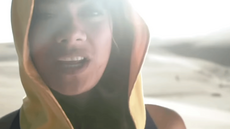
NZ HIP HOP STAND UP - LADI6 'LIKE WATER'
Hip-hop artist Ladi6 drew on her relationship with husband and writing partner Brent Park in the effortlessly crafted 2011 single 'Like Water'. With this platinum-selling single, Ladi6 (aka Karoline Fuarose Park-Tamati) made waves in the New Zealand music scene and set herself up for a lasting and successful career. Growing up in a family of performers, Ladi6 found her creative home in hip hop. Her biggest musical influence is a close, long-time collaboration with Park and some predicted the birth of the couple's son Philli in 2004 would stall her career. 'Like Water' stands as proof that the artist's relationship with her family is one of her biggest sources of inspiration. The song, written when her family had taken a creative retreat to Berlin, was inspired by Bruce Lee's famous quote about the power of adaptability - "Be like water". {{33475}} For Ladi6, the phrase "like water" serves as a metaphor for the challenges and love she shares with Park, both in their music and personal lives. Her manager at the time, Rebecca Caughey, recalls Ladi6 telling her "We've written a hit". Her instincts were correct, and 'Like Water' was a massive success, cracking the top 10 and reaching platinum sales. Ladi6's musical achievements have earned her recognition not only from fans but also from industry peers. DJ Sir-vere described her as "the best singer in Aotearoa", while King Kapisi admires her versatility and ability to experiment with different musical styles, unlike most rappers who stick to one style throughout their career. Ladi6's 'Like Water' opened doors for Polynesian women within New Zealand hip-hop, and her contributions to music were recognised in the 2021 Queen's Birthday Honours when she was appointed as a Member of the New Zealand Order of Merit. {{33476}} About the artists Ladi 6 Karoline Fuarose Park-Tamati, better known as Ladi6, is a New Zealand singer, songwriter and rapper who is known for her soulful and distinctive voice. Born and raised in Christchurch, her first foray into music was with the group Sheelahroc. Over the course of her career, she has released several critically acclaimed albums spanning multiple genres and was recognised in the 2021 Queen's Birthday Honours, where she was appointed as a Member of the New Zealand Order of Merit. Parks Brent Park, also known as Parks, is a multi-talented musician, producer, and songwriter. As the long-time writing partner and husband of Ladi6, he has been a crucial part of her two-decade-long successful career.
-

NZ HIP HOP STAND UP - FAST CREW 'I GOT'
With their irreverent 2004 hit 'I Got', Auckland group Fast Crew "came out of nowhere" to bring party music to the New Zealand hip-hop scene. This episode covers how Fast Crew demonstrated the versatility of the hip-hop genre in Aotearoa and faced the challenges of being labelled 'commercial' and getting sued by The Eagles. Fast Crew - initially consisting of Dane Rumble, Jeremy Kent-Johnson and Brad Devcich - first started meeting at producer Jeremy's Mum's house to practice rapping and writing songs. Brad recalls the moment when Jeremy created the two-chord melody for 'I Got', which Dane immediately said was "the coolest thing they had ever written". The single was a huge breakthrough for the group, resulting in sold-out venues. {{33413}} DJ Sir-Vere believes Fast Crew were such a phenomenon on the Aotearoa music scene because they built their own fanbase from the ground up, "creating their own scene". Vocalist Rebecca Le Harle, who later joined Fast Crew, remembers the initial confusion people had towards the group who were perceived as "rich, white North Shore kids" and labelled as 'pop' and 'commercial'. "I'm sure we got hated on by all the hip-hop heads," adds Brad. "It became pretty evident that we were not really gonna be accepted as part of that group," says Dane, who points out there was stigma at the time around producing pop music. Later in 2004, Fast Crew followed up 'I Got' with the single 'It's the Incredible'. Their use of an Eagles sample, without permission, led to legal action that effectively hit the brakes on the group's success. Despite what followed, members of the group are still asked to perform 'I Got' at parties today. Brad recalls the 'I Got' era as the best time of his life, and Dane views his work on the song as a life highlight. {{33414}} About the artists Fast Crew Fast Crew was a New Zealand hip-hop group that formed in Auckland in 1999. The early line-up consisted of Dane Rumble, Jeremy Kent-Johnston, Brad Devcich, Rebecca Le Harle. They gained recognition after releasing their hit single "I Got" in 2003, which peaked at number four on the New Zealand charts. Dane Rumble Dane Rumble is a New Zealand-born musician, songwriter, and producer. He gained recognition as a member of the popular hip-hop group Fast Crew, which formed in Auckland in 1999. He went on to have a successful solo career with several hit singles and albums to his name. Jeremy Kent-Johnston Fast Crew's producer and "part-time rapper", Jeremy Kent-Johnston started performing live at hip hop nights in a Downtown Auckland bar under the rap alias 'Jerome Fortune'. The group that would eventually become Fast Crew formed at his childhood home. He was responsible for creating the two-chord melody for their hit single "I Got." Brad Devcich Brad Devcich, aka Diablo, was a key member of Fast Crew and attended Auckland Grammar with fellow member Jeremy Kent-Johnston. Rebecca Le Harle Rebecca Le Harle was a classically trained opera singer recommended to Fast Crew by a mutual friend, joining the group as a vocalist. Her talent added depth to the group's music. She eventually left the group in 2006.
-

NZ HIP HOP STAND UP - NESIAN MYSTIK 'IT'S ON'
In 2002, the family-friendly hip-hop track 'It's On' by Nesian Mystik ushered in 'The Golden Age of New Zealand Hip Hop'. The DIY attitude and Polynesian values of Nesian Mystik - a multi-cultural group from Central Auckland - represented a major moment for the NZ hip-hop community. This episode covers the group's journey of Nesian Mystik, from their early beginnings in the music room at Western Springs College. It also explores the impact they had on the NZ hip-hop scene, not only with their music but in representing Pasifika and Māori communities. Formed in the music room at Auckland School Western Springs College in 1999, Nesian Mystik consisted of Te Awanui Reeder, Donald McNulty, Junior Rikiau, David Atai, Heath Manukau and Feleti Strickson-Pua. David Atai describes the group's members meeting at such a young age as like "stars aligning". Before graduating from high school, Nesian Mystik had already gained widespread attention while showcasing their impressive musical abilities. {{33384}} David made fast progress in teaching himself how to play the guitar and quickly learning how to produce music. 'It's On' was one of the group's earliest tracks, the fourth or fifth song they created together, David says. It was the result of an impromptu jam session in which he started playing chords and Te Awanui hummed the melody that eventually became the song's chorus. It was a "blessing" that Nesian Mystik was one of the first Aotearoa hip-hop groups to gain commercial success, says Scribe, as they paved the way for the community. SWIDT member SPYCC remembers the value of seeing Pasifika and Māori people represented authentically and confidently in the music industry, promoting their communities in a positive light. For Feleti Strickson-Pua, while the enduring success of 'It's On' is fulfilling, but even more so is knowing Nesian Mystik inspired New Zealand's Pasifika and Māori community. {{33385}} - About the artists Nesian Mystik Nesian Mystik is a New Zealand hip hop/R&B group that formed in 1999 at Western Springs College. The group's members come from diverse Polynesian ancestry, and they are well-known for mixing hip-hop beats with Polynesian-style guitar and ukulele. They hold the record for the most Top 10 singles by a New Zealand artist (with 11). David Atai David Atai, a member of the New Zealand hip-hop group Nesian Mystik, is a self-taught musician who taught himself how to play the guitar. Atai's impressive musical abilities were on full display in the group's early hit 'It's On'. After Nesian Mystik disbanded, Atai continued to work as a producer and collaborated with other New Zealand artists. Donald McNulty Donald McNulty is a member of Nesian Mystik. He also collaborated with David Atai to provide music for the hit animated show bro'Town, showcasing his versatile musical talents. Feleti Strickson-Pua Feleti Strickson-Pua is a member of the New Zealand hip-hop group Nesian Mystik. He learned to rap from his cousin, Malo Luafutu, better known as Scribe. He honed his skills alongside Donald McNulty, and the two performed their songs at his father's poetry nights. As one of the group's lead rappers, his original lyrics and talent helped the group gain success. Junior Rikiau Junior Rikiau is a New Zealand singer and rapper, best known as a member of the hip-hop group Nesian Mystik. Rikiau brought a unique style to the group with his ability to switch between singing and rapping. Te Awanui "Awa" Reeder Te Awanui Reeder, also known as Awa is a member of the New Zealand hip-hop group Nesian Mystik. As the band's main songwriter, alongside co-producer David Atai, Awa helped shape the group's unique sound and style. After the group disbanded in 2011, Awa emerged as a solo artist, putting a strong focus on incorporating te reo Māori into his lyrics. Heath Manukau Heath Manukau is a talented turntablist and a member of the New Zealand hip-hop group Nesian Mystik. He contributed to the group's debut album Polysaturated but remained largely behind the scenes before returning as a full-fledged group member with 2006's Freshmen.
-
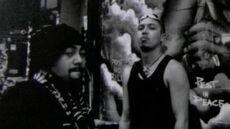
NZ HIP HOP STAND UP - DLT FT. CHE FU 'CHAINS'
Regarded as one of the greatest Aotearoa hip-hop tracks of all time, the 1996 single 'Chains' marked rapper Che Fu's first solo outing and confirmed the pedigree of producer DLT (Darryl Leigh Thompson). This episode covers the story behind 'Chains', which topped the charts for five consecutive weeks in 1996. We explore the unique platform the track's success provided rapper Che Fu and its impact on the New Zealand hip-hop scene. Many in New Zealand can sing the refrain of hip-hop hit 'Chains' by DLT featuring Che Fu but few know that the song went through a whopping 13 revisions before its release. "The original of 'Chains' was a reggae song," recalls producer DLT, and the record label asked him, "Can you R&B it a bit, mate?" As a younger artist, King Kapisi viewed DLT as a "big brother" figure and a "great guide" who influenced a lot of his peers in the New Zealand music industry. It was inspiring to meet a musician who had similar feelings and opinions to him. As a Māori Niuean, Che Fu had a unique opportunity to speak on matters affecting Māori and Pacific Islanders through his lyrics. {{33142}} In 'Chains', these issues included French nuclear testing in the South Pacific and social conditioning through advertising. "He can rap, and he can sing. On 'Chains', Che is spitting hard," says DJ Sir-Vere. 'Chains' proved to be a game-changer for both Che and DLT when the track soared to the top of the NZ music charts for five consecutive weeks. DJ Sir-Vere remembers the label's excitement about the track and how it picked up momentum "real fast", which was unexpected for a New Zealand hip-hop song at the time. King Kapisi viewed the success of 'Chains' as a victory for the New Zealand hip-hop community: "For us, having a number one meant that all of us had a number one." The unprecedented success of a New Zealand hip-hop track shocked the music industry, proving that pop music wasn't the only genre capable of reaching such heights of popularity and commercial success. The impact of 'Chains' on the New Zealand music scene was profound, as it paved the way for other local hip-hop artists to be recognised and celebrated. {{33143}} About the artists Darryl Leigh Thompson (DLT) DLT is a renowned hip-hop producer from Napier. First breaking out as a member of hip hop group Upper Hutt Posse and helping to produce what many believe to be Aotearoa's first hip hop record 'E Tū'. He has released two solo albums and left a lasting impact on the New Zealand hip hop scene, viewed as an influential figure by many artists. Che Fu Che Fu is a Māori Niuean musician and rapper. He rose to fame as a co-lead singer with the band Supergroove, and later established a successful and award winning solo career. His distinctive style and conscious lyricism helped to pave the way for a new generation of New Zealand hip-hop.
-

NZ HIP HOP STAND UP - LOST TRIBE 'SUMMER IN THE WINTER'
This episode covers the influential collective 'Lost Tribe' and their 1996 classic 'Summer In The Winter' which confronted issues faced by generations of Pacific migrants into New Zealand. In 1996, South Auckland hip-hop collective Lost Tribe confronted the mistreatment of Pasifika migrants in their debut single 'Summer In The Winter'. There has never been a better collection of NZ hip-hop artists than Brotha D, Sinbad, DJ Fingaz, Son Tan, Johni Sagala and KD. ever, says DJ Sir-Vere. Lost Tribe offered a much-needed voice for Pacific migrant communities through their music. They also used their platform to shed light on unspoken experiences and struggles, seeking to empower and inspire Pacific migrants. {{33081}} At the time, hip-hop served as a vehicle for the members of Lost Tribe to "say what we wanted to say", says Brotha D. One particular line from 'Summer in the Winter' that he wrote holds particular significance for the group, and hip-hop legend King Kapisi counts it as his favourite in all South Pacific rap music. "Many thanks to you white man, but the plan is not to stay, but to go back" represents a common reason many Pacific Islanders migrated - to obtain a better life and then bring their newfound knowledge and opportunities back to their home communities. "Every Pacific kid who grew up in our generation, they knew exactly what that meant," Brotha D says. With its message and fusion of Pacific and hip-hop influences, 'Summer in the Winter' marked a significant moment for both New Zealand hip-hop culture and Pacific migrant communities, and it continues to be remembered and celebrated as a classic track in the New Zealand music landscape. Renowned hip-hop producer DLT describes the song as "a turning point for a lot of Aotearoa hip-hop culture". "It was amazing to have like-minded brothers sticking together," recalls Lost Tribe member Son Tan. {{33082}} About the artists Lost Tribe South Auckland group Lost Tribe was so named due to its diverse membership, consisting of migrants from a number of different Pacific Islands. The group rose to fame in 1996 with their debut single 'Summer in the Winter' and used their platform to speak on the experiences of Pacific migrants in Aotearoa. Brotha D Samoan rapper Danny 'Brotha D' Leaosavai'i was an original member of the South Auckland group Lost Tribe. He went on to co-found the legendary New Zealand hip-hop label Dawn Raid Entertainment. Sinbad Sinbad was an original member of Lost Tribe and of Rarotongan descent. DJ Fingaz Jim "DJ Fingaz" Makai was an original member of Lost Tribe and of Niuean descent. Son Tan Jonathan "Son Tan" Pale was an original member of Lost Tribe and of Tongan descent. Johni Sagala Johni Sagala was an original member of Lost Tribe and of Samoan descent. KD Kendall "KD" Kereopa Takai is a former member of Lost Tribe and of Cook Islands descent.
-
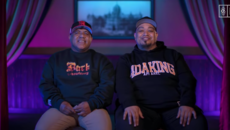
NZ HIP HOP STAND UP - DOUBLE J & TWICE THE T 'SHES A MOD'
In 1989, Double J & Twice The T brought the hip-hop genre to the mainstream with their hit 'She's A Mod [Mod Rap]' featuring Ray Columbus. In late-80s Aotearoa, hip-hop was still largely unknown to the general public, and the success of 'She's a Mod [Mod Rap]' helped open up a lane for future New Zealand hip-hop artists to follow. This episode covers Double J & Twice The T's origins in Ōtāhuhu and how they entered the music scene. We also hear about the disconnect between Double J & Twice The T's personal musical preferences and the commercial style they were channelled into. Jerry Tala-Brown of Double J & Twice the T discovered his passion for hip-hop at a high school assembly when he performed a rap about substance abuse. In the audience was Jeremy Toomata, who was himself becoming known for his beatboxing. The two soon connected and eventually became one of the first groups to bring Aotearoa hip-hop to prominence with their 1989 hit 'She's a Mod [Mod Rap]'. Jerry and Jeremy first made waves in the local music scene as JJ and The Jammers, winning several local rap competitions and a Telethon competition where Ray Columbus was a judge. {{32988}} At the same time, Mike Chunn and Tim Finn, former members of New Zealand pop pioneers Split Enz, were establishing their own record label - Definitive Records. Chunn recalls Finn saying to him, "Find some artists, let's just make records", so the idea he landed on was to remake the Ray Columbus and The Invaders 1965 hit 'She's a Mod' as a pop-rap song. When Chunn spoke to him about it, Columbus recommended Tala-Brown and Toomata to Chunn, though Toomata admits that they "honestly didn't really know who that [Columbus] was." When it was released 'She's a Mod [Mod Rap]' became an instant hit and reached number two on the New Zealand music charts. While they may have been dismissed as 'bubblegum' or 'commercial', Double J & Twice the T played a crucial role in paving the way for Aotearoa hip hop, bringing it to a wider audience. They even influenced one of New Zealand's most successful hip-hop stars, Scribe. The young Christchurch emcee recalls that being brought on stage during Double J & Twice the T's school tour was a "very pivotal moment for young Scribble." {{32987}} About the artists Double J & Twice the T Double J & Twice the T was a New Zealand hip-hop group known for their 1989 hit 'She's a Mod [Mod Rap]', which brought New Zealand hip-hop to the forefront. The group's members Jerry Tala-Brown and Jeremy Toomata grew up in Auckland and first made waves in the local music scene as JJ and The Jammers. The success of 'She's a Mod/Mod Rap' brought hip-hop to the forefront of the New Zealand music scene. The group released three top-ten singles before breaking up in 1991. - Jerry Tala-Brown Jerry Tala-Brown is a former member of the New Zealand hip-hop group Double J & Twice the T. He discovered his passion for rap in a classroom when tasked with delivering a talk on any subject, opting to rhyme his entire presentation and quickly being recognised for his talent. He was the group's primary vocalist. - Jeremy Toomata Jeremy Toomata is a former member of the New Zealand hip-hip group Double J & Twice the T. Growing up in Ōtāhuhu, he was a fan of groups like Run DMC and The Fat Boys. As the group's primary beatboxer, Mike Chunn described him as a 'master'. Later on in his career, he was a member of two other rap groups, Radio Backstab & DJ Payback, and Overdose.
-

NZ HIP HOP STAND UP - JESS B 'SET IT OFF'
JessB’s professional netball career came ‘crashing down around’ her, but focussing on her passion for hip hop saw her reinvent herself as a bold role model for thousands of fans with her 2018 single ‘Set It Off’. Part-Kenyan and part-Pākehā, Jess Bourke (JessB) found hip hop while trying to find her place in Aotearoa as a Black woman. While she spent time writing her own raps through high school, she never thought she could become a rapper when she had a shot at something completely different. “Growing up, my dream was always to be a Silver Fern,” she says. {{27985}} Playing for the Northern Mystics and then the Central Pulse, netball was one of the biggest parts of JessB’s identity into her twenties. But when it came time for contract renewals, Jess was unceremoniously dropped from her professional netball team. While for a period she ‘genuinely thought [her] life was over’, she also took it as a catalyst to finally pursue her SoundCloud side-hustle. One might call it fate, says JessB. One year later, in 2018, she released her debut album Bloom with ‘Set It Off’, a headlining track that spoke to different parts of her identity. Set It Off’s music video, directed by Half Queen, drew on Jess’ netballing career with scenes set on the tournament bus, the changing room and the courts. {{27987}} “It felt very full circle, so we had this netball game between the Mystics and the Misfits, my team. It was really awesome for me because it really felt like the coming together of these two worlds I had been part of“, says JessB. While the music video was focussed on her career, the rapper’s lyrics were about her identity. Specifically about ‘being from two bloodlines and being confused and lost [her] whole life about where [she] fit’; referring to her mixed lineage. Race, identity and representation have always been part of JessB’s life and creating visibility around her own experiences are connecting the rapper with her fans in a way that’s different to anyone before her. {{27983}} “By being herself and standing for the things she stands up for, naturally she is a role model and people look up to her,” says artist Who Shot Scott. “Anytime JessB is on a line-up, you can guarantee that she’s gonna draw out a lot of women, a lot of woman of colour, lots of the queer community,” Half Queen adds. While she doesn’t know exactly what the future will hold for her, JessB has already contributed ‘something that has never been seen before’ to the hip hop scene. “As long as I am loving it and enjoying it, and people around me are too, then no need to fix what’s not broke. We just gotta keep going,“ she says. {{27989}} This episode draws on JessB’s past life and looks at the unique and pioneering impact she’s made on Aotearoa hip hop. It highlights her championing of inclusivity and action through her music that is visible, empowering and bold. - About the artist JessB Jess Bourke grew up in Auckland in the 90s and had her heart set on professional netball even though she could quickly pick up a beat. {{27991}} In 2016, she decided to take on rapping full time and within two years, her debut EP, ‘Bloom’, led her to win as Best Hip Hop Artist at the 2018 New Zealand Music Awards. Her second critically-acclaimed EP, ‘New Views’, capped off a meteoric two-year rise for the artist alongside winning Best New Zealand Act at the MTV European Music Awards. JessB’s latest project is her '3 Nights In Amsterdam' mixtape which was released in August 2020.
-

NZ HIP HOP STAND UP - SWIDT '312'
For the members of SWIDT, their debut track represented a new platform allowing them to comment on their own experiences with mental health, masculinity and authenticity from the Auckland suburb of Onehunga — otherwise known as the ‘312’. Before becoming SWIDT — INF, SPYCC, Jamal, Smoke and Boomer Tha God grew up together through the late-1990s and early-2000s in Onehunga where they were within walking distance of each other’s houses. Jamal says that the five “were just a bunch of friends making music at home in our bedrooms [and] in our lounges” when they decided to have a crack at a project together in 2014. {{27913}} With each of the five group members ‘bringing something to the table’, that moment marked the beginning for SWIDT - which stands for ‘See What I Did There?’. Working on their music for several years, the group’s debut album in 2016 featured a taste of SWIDT’s loyalty to their home turf. ‘312’, one of SWIDT’s first tracks, was a tribute to the trials and tribulations they experienced while they lived and grew up in Onehunga. The track’s name comes from the bus line which ran between Auckland’s city centre and the Onehunga town centre. While discontinued today, the line was and remains heavily associated with Onehunga itself. “The memories and experiences keep it alive, but living there now it’s not the same experience,” says SPYCC. Since they were teenagers, house prices in Auckland’s central isthmus have soared, and this has meant a change to the makeup and experience of living in the 312. Later in 2017 their coming-of-age album Stoneyhunga referenced the band member’s adolescent experiences growing up in the 90s and directly addressed the ongoing gentrification in their home suburb. “My mum’s house is like the only state house on the street. Across the road from her house there used to be a massive-as cornfield, that’s gone, it's full-on apartments now,” INF adds. Beyond Onehunga, the members of SWIDT have boldly confronted issues like mental health, toxic masculinity and stereotyping in their subsequent albums and singles. “We do social commentary, we speak on experiences, what we’ve seen — a lot of people can relate to that. And I feel there’s a lot of power in vulnerability,” INF explains. Rapper JessB says that being ‘so relatable’ means SWIDT’s music brings people together authentically and collectively. Together in their music and shared vulnerability, the SWIDT five ‘love each other like brothers’ with the reassuring knowledge that ‘Onehunga is the best place in the world’. {{27915}} - SWIDT Hip hop collective SWIDT were all high school friends before forming the group in 2014. Their first project in 2016 was compilation album ‘SmokeyGotBeatz Presents SWIDT vs Everybody’ which included their first breakthrough track ‘312’. That year, they were nominated for having the Best Urban/Hip-Hop Album at the New Zealand Music Awards. While they did not officially win, the award winner Aaradhna refused to accept what she felt was a discriminatory category and instead offered it to SWIDT as 'the future of hip hop'. SWIDT’s subsequent official debut album ‘Stoneyhunga’ reached number four on the New Zealand album charts. Soon after came the ‘The Most Electrifying’ EP, ‘Good Things Come in Threes’ and singles ‘Preacher Man’, ‘Seize The Day’ and ‘Bunga’. {{27918}} INF INF had released several singles produced by Smoke and also DJ Madd Musik, before helping start SWIDT. Making music as part of the group included ‘Before Tears Dry’ which was partially inspired by how the death of a close family member had affected his mental health. SPYCC SPYCC, pronounced Spike, released music prior to SWIDT as ‘Spycc&INF’ in 2012 with long time friend and SWIDT member INF. Band members say that he ‘shapes’ the group's direction. {{27920}} Smoke Smoke or SmokeyGotBeatz, had a long background in professionally producing beats before SWIDT. Prior to 2016, the Tongan/Māori producer worked in Los Angeles where his beats were picked up by big-name artists like Jay Rock and Hit-Boy. - Jamal JAMAL is one of the primary DJs in SWIDT and works as an executive producer in the group. His father was also a DJ and inspired his son to do the same after transforming his garage into a studio. {{27923}} Boomer tha God Boomer tha God, is the ‘personality’ of SWIDT according to his band members. He attended Onehunga High School in his formative years alongside the rest of the group.
-

NZ HIP HOP STAND UP - THA FEELSTYLE 'SUAMALIE'
Rapped nearly entirely in Samoan, Tha Feelstyle’s 2004 single ‘Suamalie’ was a tribute to the islands of the artist behind the track, Kas Futialo, and helped inspire Pacific artists in Aotearoa to incorporate their native tongue into their hip hop. — Kas Futialo is a quiet but observant musician. And he says hip hop is what gave him a voice. By 2004, he was already heavily active on the New Zealand hip hop scene having worked with other hip hop pioneers like King Kapisi and DJ Raw. When the time came to record a debut album, Kas was yearning to reconnect with his ancestral home and birthplace in Samoa which he left when only nine years old. “I did not want to come to New Zealand, I begged my auntie that I was staying with that I didn’t want to go”, Kas says, adding that he listened to Samoan music to connect with a life on the islands that he never lived. {{27739}} So when it came to writing lyrics, the rapper was ‘prolific’ with many books and significant time dedicated to his rhymes. DJ Viani and King Kapisi describe him as being fascinated with the Samoan language. Produced by DJ Raw on his garage set up in Wellington, Futialo finished the final lyrics for ‘Su'Amalie’ and recorded them in an hour and a half. With the song, the Samoan artist saw it as a tribute to the ancestral land that he’d left as a kid. “As a hip hop artist, the dream is to go to New York, the home of hip hop. For me, my dream was to go back to Samoa and say I did something good,” Kas says. And with Su'Amalie’s music video, he got to do exactly that. {{27745}} Returning to his hometown, the filming trip was ‘more than a music video’ for the artist. Directed by filmmaker Chris Graham, the music featured scenes of Kas Futialo rapping across the picturesque surroundings of his Samoan hometown. While making the video, the scene with rapping school children was filmed at the real primary school where Kas had been a pupil decades earlier. Another scene featured the moment that the musician reunited with his family after being apart since he was a child. For Kas Futialo, filming the video was ‘very overwhelming’ and led him on ‘a journey back home’. When released, the track made it into the Top 40 and went on to win Pacific Song of the year. But even bigger than the impact that the track made on release was the pathway it unlocked for other artists who heard Kas’ unique Samoan rapping. {{27737}} “I listened to another couple of Samoan rappers and they were rapping exactly like Kas,” says King Kapisi. Scribe, who is also Samoan, added: “I admire him for the road he took, he might not have been the most popular, but if you were a Samoan and you were studying hip hop, you would know Kas.” For Kas Futialo, in his words, it was to give “another Samoan the option.” - About the artist: Kas Futialo {{27741}} Kas Futialo was born on the Samoan island of Upolu in the 1980s and moved to New Zealand when he was only nine despite wanting to stay on his ancestral land. As a teenager who was still learning English, he lived with his aunt and attended St Patrick’s College in Wellington. He first interacted with the emerging hip hop scene through a rap competition in 1987, that also featured Upper Hutt Posse, and soon he began making himself known. With DJ Raw and King Kapisi, he helped form The Overstayers in 1995. In 1998, he released his first track under Tha Feelstyle. In 2004, Su'Amalie was part of the artist’s debut album, Break It To Pieces, which saw accolades from reviewers and several wins at the inaugural Pacific Music Awards. Following the success of his first album, the musician went on to release several other tracks in later years. Futialo’s last album, Good Morning Samoa, won Best Pacific Music Album at the New Zealand Music Awards in 2012 and was nominated for three other awards at the Pacific Music Awards. {{27743}}
-

NZ HIP HOP STAND UP - MISFITS OF SCIENCE 'FOOLS LOVE'
The duo who would go on to form Misfits of Science only met as a result of a chance encounter at a hip hop clothing store on Queen Street in Auckland. Stevie McQuinn and Yudhi Moodley say that they were both obsessed with hip hop clothing at the time and bonded over their love of the genre. The friends soon became bedroom music producers together and in their words, were ‘eating yum bars, smoking weed and just pounding out music’. South-African born Yudhi Moodley had wanted to become a rapper from a young age and had a vision of getting a record deal from the start with Stevie saying he was ‘holding on to the cape of Super-Yudhi’. They formed Misfits of Science in 2002. “When [others] were out there getting their girlfriends, I was just like music is my girlfriend. I always had a vision that I wanted this record deal. It was a silent confidence that I hadn’t expressed to anyone other than Steve,” Yudhi says. {{27625}} And it wasn’t just the production of their music that they approached differently. To find a sample to use in a new track, the duo went looking in the CD discount bin at The Warehouse. That sample became the instantly recognisable hook for their hit ‘Fools Love’. Another arresting component was the music video with its animated oversized bobble-headed versions of Steve and Yudhi, which looked like nothing else around at the time. It first debuted to a national audience on C4’s Holla Hour. “We’re sitting on Yudhi’s couch at his mum’s flat — pretty exciting that a little Māori boy from Waiuku is about to be on TV with his video,” Stevie recalls. The debut saw an ‘overwhelming response’ from viewers who called in for it to be replayed again in the same hour. Steve and Yudhi were euphoric. With the release of the video, radio stations picked up on Fools Love and hip hop fans quickly sent the song to the top of the charts. Misfits of Science was suddenly on top out of nowhere. {{27626}} By August 2004, the song had spent four weeks at number one on the New Zealand singles chart and Yudhi was ‘living his dream.’ That dream included the pair touring the country and becoming known for their new experimental style. The release of their debut album, ‘MOS Presents’, saw them go further with their tracks, which the duo says hurt their commercial success, but which fulfilled them artistically. “Maybe we could’ve made one or two more commercially viable tracks but we weren’t thinking that way to our detriment. Of course, the fallout was less success … and less free alcohol when you go anywhere,” says Stevie. This episode looks into the relationship between the duo that are the Misfits of Science and how their breakthrough debut single Fools Love landed big in the early 2000s. It describes the challenges the pair faced and how their music was received by the industry at large. {{27628}} - About the artists Misfits of Science Named after an obscure American comedy, Misfits of Science went on to carve out a new type of bedroom producer with their track ‘Fools Love’. Yudhi and Stevie worked together on Misfits of Science several times after Fools Love, with the group releasing an EP in 2008 titled ‘Can't Leave You Alone’ and then regrouping for singles in 2018 and 2019. - Stevie McQuinn Jr (Optimus) {{27630}} Stevie McQuinn Jr was working in a Queen Street clothes shop when he met Yudhi Moodley and formed Misfits of Science with him. He was later the lead drummer on tour with Kimbra in the early-2010s. - Yudhi Moodley (Colossal x Ruckus Garvey) {{27632}} Yudhi Moodley had a vision of where he would be with Misfits of Science and Fools Love brought him to heights he could never imagine. While Yudhi no longer works as a musician full-time, he continues to release music as Ruckus Garvey.
-

NZ HIP HOP STAND UP - DAM NATIVE 'BEHOLD MY KOOL STYLE'
In 1996, Dam Native’s ‘Behold My Kool Style’ made waves in challenging the ongoing effects of Pākehā colonisation and racism against Māori and Pacific peoples in Aotearoa. “Robbed of our language, robbed of our land, robbed of our culture. This is why that song exists; to put Māori hip hop on the map,” says lead rapper Danny Haimona. Built on ‘groundbreaking lyricism’, ‘Behold My Kool Style’ was a track that explored what it meant to be Māori in a colonised state. The song’s lyrics referenced Maui and Papatūānuku, the experiences of tangata whenua as well as the Springbok Tour and ongoing colonisation in New Zealand. {{27550}} Even down to the group’s name, Dam Native’s focus was on drawing attention to the ongoing injustices towards Aotearoa’s indigenous peoples that were plain to see but sparingly discussed in the mainstream. “Watching television in the 70s, there was this phrase, ‘those damn natives!’”, DLT says. Alongside vocalist Danny Haimona, the group was a ‘collective of good friends’ who were ‘like minded’ about the need for more Māori hip hop. These included Bennett Pomana, Darryl Thomson (DLT), Teremoana Rapley, Hone Manukau and Bryson Campbell. {{27552}} Danny says that, while he wanted to make hip hop by the time he was 11, the lyrics of the song came from a passion to learn more about his own roots and his people’s history. The track’s ‘intimidating’ music video was inspired by late 19th-century colonial-style photography. Directed by filmmaker Jonathan King, band members wore Edwardian-period suits and took control of a period look that was otherwise dominated by Pākehā settlers. At the 1997 New Zealand Music Awards, Dam Native won two awards as Most Promising Group and with Behold My Kool Style’s music video winning best video. Danny Haimona also won Most Promising Male Vocalist for his vocals on the track. {{27555}} At the 1997 New Zealand Music Awards, Dam Native won two awards as Most Promising Group and with Behold My Kool Style’s music video winning best video. Danny Haimona also won Most Promising Male Vocalist for his vocals on the track. Described now by others as ‘pioneers’, Dam Native’s ‘irreplaceable’ swag made others ‘proud to be brown’ that has undoubtedly paved the way for musicians to this day. “It’s a taonga I wear around my neck every day for the absolute joy it’s brought me. My main objective was to be the best Māori MC there is and for Māori hip hop to ring in New Zealand,” Haimona says. This episode explores what inspired the lyrics of Behold My Kool Style and its accompanying music video. It looks at the people who the song influenced and how Dam Native broke new ground in the history of Māori and New Zealand hip hop. {{27557}} About the artists: Dam Native Originally called Native Bass and later changing to Dam Native, the group formed around 1990 with band members Danny Haimona, Bennett Pomana (MC B-Ware), Darryl Thomson (DLT) and Teremoana Rapley. Their first album, ‘Kaupapa Driven Rhymes Uplifted’, was released in 1997 and helped bring the group to the forefront of Aotearoa hip hop. Through the years, the group added members like Bryson Campbell, Hone Manukau (H-ONE), Fred Harrison, Sol Ankers (Sol E) and Native612. {{27559}} Danny Haimona Daniel Haimona (Danny D) was the lead rapper of Dam Native and stuck with the group ever since. While he was born in Wellington’s Island Bay, his family moved to Auckland for work opportunities when he was 12 and led him to meet members of the underground-rap scene. In Tāmaki Makaurau, he met the Upper Hutt Posse’s DLT (Darryl Thomson) and Teremoana Rapley, who was established within the scene and provided mentorship to the fledgling musician. Haimona returned to Dam Native in 2010 with the band’s comeback album, ‘Aotearoa … Nobody Does It Better’. {{27561}}
-
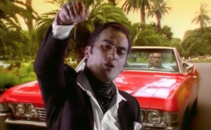
NZ HIP HOP STAND UP - OMC 'HOW BIZARRE'
In 1995, OMC’s Pauly Fuemana and Alan Jansson pulled an all-nighter and wrote ‘How Bizarre’, a song that would come to dominate the global charts and make history as Aotearoa’s first hip hop beat to go truly global. - {{27444}} Pauly Fuemana’s wife, Kirstine Fuemana, still has “books and books” of his songwriting and remembers him writing “endlessly” when he came up with the track that would go on to irrevocably change his life in 1993. The Ōtara Millionaires Club, or OMC, was still an emerging group on New Zealand’s hip hop scene when vocalist Pauly Fuemana and producer Alan Jansson were tinkering away writing late into the night. On that night, right before the group’s debut appearance at the Big Day Out, Alan remembers him and Pauly working into the early morning with the pair having written eight tracks in one sitting — one of which became How Bizarre. {{27446}} Alan added that the song’s instantly recognisable hook came from Pauly’s father who used to play it to him as a child. With a relaxed mix of guitar and trumpet, the song became the “perfect mix of rap and pop melody”. Setting out without many expectations, success for OMC came hard and fast. How Bizarre went to number one in at least 13 overseas pop charts. This was before the internet age and the track took months to reach overseas markets but instantly blew up on release in Australia, the U.S. and the U.K. “I went to L.A. and it was coming out of every second shop,” Darryl Thomson (DLT) remembers. {{27448}} As Pauly Fuemana toured the world, Aotearoa’s music industry was barely ready for a superstar like him. Kirstine recalls being unable to find local entertainment lawyers or accountants who were able to take on a star as big as he was. Over the following years, OMC toured the world on the back of the enormous success of How Bizarre. The track was introduced as “the biggest song in the history of New Zealand music” on the BBC series Top of the Pops and Pauly became one of the country’s music globetrotters. Kirstine Fuemana says she saw her husband grow and live in an environment that was unimaginable for anyone from his roots. Pauly Fuemana sadly passed away in 2010. {{27449}} “I watched him experience things that a kid from Ōtara, who had pretty much been on the streets since 11, would never imagine they could live,” she said. This episode features many who knew Pauly and witnessed his rise from the streets of South Auckland. It reveals new details about the origins of How Bizarre and how he became a real Ōtara millionaire while seeing the world. - About the Artists OMC OMC was formed as the ‘Ōtara Millionaires Club’ by Phil Fuemana and Pauly Fuemana in 1993. Before their ‘one-hit wonder’, the group had recorded ‘We R the O.M.C.’ for Alan Jansson’s groundbreaking hip hop compilation album ‘Proud’ which put them on the map of New Zealand music. Following How Bizarre, came several singles including ‘Land of Plenty’ and ‘Right On’ which both charted in 1996 and 1997. Following a contractual debate, OMC regrouped in 2007 with a new track ‘4 All of Us’. - Pauly Fuemana {{27451}} Paul Lawrence Fuemana was a founding member of the two-headed ‘Ōtara Millionaires Club’ alongside his brother Phil in 1993, who left shortly before the release of How Bizarre. He collaborated with Jansson on his releases after his brother left the group. Born in Ōtara with roots in Niue, the artist came from a poverty-stricken background and found an unthinkable career as a musician. His death in 2010 saw hundreds memorialize him as forever an icon in New Zealand music history. - Alan Jansson {{27453}} Alan Jansson became a significant part of OMC around the time of the release of How Bizarre, having co-written the album with Fuemana, while also handling the production and arrangement of the track. The producer regrouped with Fuemana in 2004 to release ‘4 All of Us’. Jansson has a legendary status for having been involved in numerous breakthrough moments for New Zealand hip hop including Sisters Underground’s breakthrough track In The Neighbourhood.
-
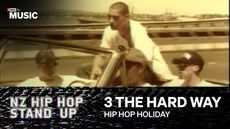
NZ HIP HOP STAND UP - 3 THE HARD WAY 'HIP HOP HOLIDAY'
In 1994, Kiwis were ‘still wearing stubbies and listening to rock and roll’ when 3 The Hard Way’s ‘Hip Hop Holiday’ hit number one and helped usher the genre into the New Zealand mainstream. “Radio slogans back then were no rap, no crap,” Mike Paton says. When 3 The Hard Way formed in 1993, New Zealand’s hip hop scene was still “definitely underground”. Group members Chris Ma'ia'i, Lance Manuel and Mike Paton found themselves producing within a genre that had few expectations but scorn in the mainstream. “When you got a Māori boy breakdancing on the side of the road, they thought, ‘look at these street kids; what are they up to? No good,’” Lance says, recalling the racism of the era. All three were part of Tāmaki Makaurau’s underground dance party scene in the 1980s and found themselves in a group of musicians who would go on to define the genre in the upcoming decade. {{26894}} Inspired by the reggae they listened to as youth, Lance was working with a melody from a replayed sample of British band 10cc’s ‘Dreadlock Holiday’ as the basis of the group’s first track. Once he’d gotten a beat down, Chris then suggested that the trio should “loop it and put some rhymes on it”. With that, the newly-formed group had unknowingly created the song that would see them headlining packed-out shows across the ditch within months. Coming six years after Upper Hutt Posse’s pioneering ‘E Tū’, the summery beat of Hip Hop Holiday was the first Kiwi hip-hop track to reach gold status, having also spent several weeks at number one on the charts. “There were never any aspirations, there was never any plan,” Chris says, who added that suddenly fronting for thousands of fans never came naturally to him. While sampling rights meant the group had trouble collecting royalties, the visible success of the group’s song helped pave a path for other rap and hip hop legends who would go on to achieve commercial success. {{26895}} 3 The Hard Way went on to release their debut album Old School Prankstas while touring in Australia and New Zealand in 1994. Following this, the trio took an extended break with Lance later leaving the group to focus on a life outside of music. A comeback in 2003 saw Ma'ia'i and Paton once again top the charts with their hit single ‘It’s On’. This episode tracks 3 The Hard Way from their Westie origins to headlining shows with their breakthrough track. It explores what inspired Hip Hop Holiday and how its unexpected success impacted the trio as the first hip hop artists to reach the mainstream. - About the Artists 3 The Hard Way Forming in 1993, 3 The Hard Way were the first hip hop group to break into the New Zealand mainstream. Hailing from West Auckland, the three band members’ success with Hip Hop Holiday paved the path for a new generation of rap artists. After a hiatus, the group returned in 2003 with their second album ‘Eyes on the Prize’. The album peaked at number four on the charts while single ‘It’s On’ went on to give the group its second chart-topping single. Their first album, Old School Prankstas, was reissued in 2012. {{26897}} Chris Ma'ia'i Chris “Mighty Boy C” Ma'ia'i grew up in West Auckland and attended Waitakere College as a teenager. Chris had met Lance Manuel while still in school and formed 3 The Hard Way with Lance’s friend Mike Paton in 1993. He returned for the group’s comeback in 2003 and was the group’s primary vocalist. {{26899}} Lance Manuel Lance ”'DJ Damage” Manuel had attended Henderson High School and was a turntablist in 3 The Hard Way. He knew both Chris Ma'ia'i and Mike Paton as a young Westie. With a strong interest in DJing, he left the group on good terms after the success of Hip Hop Holiday and Old School Prankstas. {{26903}} Mike Paton Mike “DJ Mike Mixx” Paton also attended Waitakere College and grew up in West Auckland. He had worked with Lance Manuel before forming 3 The Hard Way as a DJ in the Auckland dance party scene. He returned for the group’s comeback in 2003. {{26901}}
-

NZ HIP HOP STAND UP - CHURCH & AP "READY OR NOT"
This episode tracks Church & AP’s speedy rise in the hip hop world and explores where the new New Zealand hip hop sound is heading. Because, ready or not, the future of Aotearoa hip hop is already here. Before Church & AP's 2019 hit 'Ready or Not' was even released, it had been picked up by Mai FM, played at Childish Gambino’s Pharos festival, and been the most Shazam-ed song in New Zealand. 'Ready or Not' was set to become a phenomenon. {{19391}} And its success wasn’t limited to Aotearoa either – this homegrown hit made it big internationally too. Radio BBC 1Xtra discovered the song, and soon the boys were on a flight to the UK. Ready or Not, with its falsetto hook, banger chorus, and fresh vocals, was being played on repeat. Speaking about Church & AP’s international acclaim, hip hop artist Dirty says, “because of the internet, people aren’t just looking left and right and trying to be the best rapper on their street, you know. It’s like you’re actually competing with the world.” Church & AP’s rise to the top didn’t come out of nowhere. The duo found a mentor in kiwi rapper Melodownz at a music program in their local community centre. He was one of the people who pushed the pair to continue with their music. Straight from school, still in their uniform, Church flicked AP the hook for what would become Ready or Not. “These kids are like, so driven in what they know they ant to do and how they want to do it,” says DJ ILL BAZ. “It’s just their first, like, they’re not even getting started yet.” {{19392}} The song, perhaps, crests a new wave in New Zealand hip hop which has been rising for some time: artists who take the history of Aotearoa hip hop, of international hip hop and build on it. As Scribe says “I wanna hear what else they got. I wanna hear stories. I wanna feel it… I’m looking forward to what they’ll do. I’m looking forward to what the next generation does because I think it’ll be big.” . About Church & AP {{19394}} Church (Elijah Manu) and AP (Albert Purcell) are a rap duo who met at school in Auckland. Their music has plenty of other local artists featured, many who are mentors for the duo. Much of their learning has been credited to a community outreach programme where they learnt how to use software and record music as well as assisting in meeting plenty of their mentors. In 2019 they released their debut album ‘Teeth’. NZ Hip Hop Stand Up was made possible by the RNZ/NZ On Air Innovation Fund.
-

NZ HIP HOP STAND UP - SHEELAROC 'IF I GAVE YOU TH MIC'
When New Zealand’s first all-female hip hop crew, Sheelahroc, dropped their track ‘If I Gave U Th’ Mic’ in 2000, they were propelled onto the national stage. The crew consisted of three members: Ladi6, Voodoo Child, and Tyra Hammond. They were rappers, writers, performers, singers, and MCs. In short, they were, as hip hop artist Randa describes them, “dope, talented woman.” {{19251}} Voodoo Child thinks back to the birth of Sheelahroc: “everyone else that was MCing the time that I was around were all male. But I heard from somebody else that there was another chick in Christchurch who was also writing raps.” That chick was Ladi6. They joined forces, and soon after Sheelahroc picked up their third member, Ladi’s cousin, Tyra. The teenagers treated their band like a business, holding weekly meetings and even keeping minutes. The vision was clear. Ladi saw all-female rap crews overseas and wanted that same representation here in New Zealand. “There are definitely attitudes out there that women should be a certain way,” Randa says, “like, gentle or low key. But when you see a woman with mad skills, you cannot deny the power there.” {{19253}} When their single was released, New Zealand’s hip hop industry was sorely lacking in female representation. Radio stations across the country quickly discovered Sheelahroc’s talent and If I gave u th’ mic was nominated for a bNet music award. Rapper and hip hop artist Scribe grew up in the same Christchurch neighbourhood as Sheelahroc. He saw a challenge in the all-female rap crews’ path to success. “[Sheelahroc] made me kinda be like, oh, hang on, I’m going to get left behind here if I don’t get my shit together,” Scribe says. This episode follows Sheelahroc from their origins through to their breakup. It explores female empowerment, the early 2000s hip hop industry, and unearths the terrible music video all the members thought (and hoped) was long lost. . About the artists Sheelahroc {{19255}} The meaning of Sheelahroc is ‘Women are the Strength’ which signifies all that this group embody. The group formed in Christchurch in 1999 and consisted of females of various ethnicities with the aim to provide a supportive environment for females in what is a classically a male dominant Hip Hop scene. Original band members were Karoline Tamati (Ladi6), Sarah Tamaira (Voodoo Child) & Tyra Hammond. In 2001, Sheelahroc released ‘If I Gave U Th’ Mic’ and won the award for the Most Promising New Act at the bNet Music Awards. Ladi6 was a consultant for this documentary series. . Ladi6 {{19257}} Ladi6 (Karoline Tamati) was born in Christchurch although she recalls her initial song writing memories began when she and her family spent a year in Africa when she was a teenager. Ladi and her cousin Tyra Hammond and Sarah Tamaira started the band when she was just 16 years old. Once the band went their separate ways, Ladi met Brent Parks, a talented musician who she started the group ‘Verse Two’ with and who eventually she married. Verse Two shared band members with Shapeshifter and they encouraged her to move to Melbourne where she collaborated with Shapeshifter on ‘When I Return’. Ladi has released three albums (‘The Liberation Of…’ was certified platinum in 2011), won a number of significant awards and collaborated with other high profile artists such as her cousin Scribe and Fat Freddy’s Drop. . Tyra Hammond {{19259}} Tyra Hammond grew up in Christchurch with her cousin Karoline Tamati (Ladi6) and formed the band Sheelahroc together. Once the band split, Tyra continued to make music after meeting Jeremy Toy, one of Opensouls core band members. Influenced strongly by funk, Tyra bought a fresh sound and the band created a side group named ‘Tyra and the Tornadoes’. The Opensouls continued to make music with Toy & Tyra doing the majority of the songwriting to compliment Tyra’s vocals. The band released two albums, Kaleidoscope and Standing in the Rain. . Sarah Tamaira {{19261}} Sarah Tamaira also known as Voodoo Child was a member of Sheelahroc, an all-female band that started in Christchurch with a focus on including and encouraging the female Hip Hop artists to have a voice in what was usually a scene dominated by males. Their single ‘If I Gave You The Mic’ won the award for Most Promising New Act at the 2001 bNet Music Awards. NZ Hip Hop Stand Up was made possible by the RNZ/NZ On Air Innovation Fund.
-
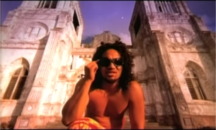
NZ HIP HOP STAND UP - KING KAPISI "REVERSE RESISTANCE"
Kiwi-Samoan artist King Kapisi’s 1999 hit 'Reverse Resistance' raised the standard for music. It sent shock waves through Aotearoa’s underground hip hop scene and with it, Kapisi became the first-ever hip hop artist to win the coveted Silver Scroll songwriting award. This episode explores how King Kapisi uses his music discuss the effects of colonisation, show Samoan pride and share the stories that matter to him. As Scribe says, “that’s why he’s the king.” In the words of Auckland hip hop duo Eno x Dirty, “he exudes hip hop and Pasifika as well.” Kapisi grew up in Wellington but maintained a strong connection with his ancestral home of Samoa. He found inspiration in Samoan hip hop group The Mau, which fused hip hop with Samoan culture. For Kapisi, The Mau expanded the realm of what was possible in music. {{19191}} “I have a very strong cultural roots connection to my home of Samoa,” Kapisi reflects. “The difference between most rappers and me was that I was going to represent me and my hood, my country, and the area that I’m from. And so I make South-Pacific hip hop.” This South-Pacific focus shines through. In his lyrics, rapped over stripped-back guitars, drums, and even an orchestral string section, he speaks of combating colonialism. He focuses on the religion it brought into Samoa and the lives it “fucked up”. The song stands in resistance to colonial power calling for its reversal. Even Reverse Resistance’s music video, filmed on Savai’i, in his village of Fagamalo, works to this end. Directed by Kapisi’s sister, Sima Urale, it shows Samoa not as a commercialised holiday destination or a page out of National Geographic, but as a living place in its own right. It moves hip hop from the hood to the Islands. NZ hip hop artist Melodownz recalls watching the video with his Samoan grandmother: “I’d never been to Samoa, so she was telling me about where things were and stuff in that video... It made her happy.” {{19189}} Reverse Resistance is a dope, high-quality, well-composed song, but more than that – it is music as a tool and as a weapon. King Kapisi’s uncompromising style emanates Samoan pride. He smiles, “I’m very, very lucky that my whole career I’ve made music that I like and I actually dig, and I can live with it because I don’t have to change for anyone. Just me.” . About King Kapisi {{19193}} Bill Urale began his musical days rapping under the name Bran Muffin in his hometown Wellington. Several years later, he and Submariner (Andy Morton) were introduced and Bill changed his MC name to King Kapisi. Kapisi is the Samoan word for cabbage, a nickname Bill’s mother called him as a child. The two began working together in Submariner’s studio ‘The Hut’ and it was then that he signed with record label Festival Records in 1999. King Kapisi is renowned for his politically conscious lyrics and in 1999 ‘Reverse Resistance’ was released winning the APRA Silver Scroll and being the first Polynesian to do so. King Kapisi has released 3 albums and won numerous other awards and was a consultant for this documentary series. NZ Hip Hop Stand Up was made possible by the RNZ/NZ On Air Innovation Fund.
-

NZ HIP HOP STAND UP - SCRIBE "STAND UP"
Parental Guidance recommended for young viewers. Scribe and P-Money tell the story of their record-breaking hit ‘Stand Up’, which knocked international artists off the top of the charts and spent 12 weeks at number one. This episode covers Scribe’s ambitious journey to fame, the shape of Aotearoa’s early 2000s hip hop scene, and the pushback he received from the music industry and features rare behind the scenes footage of the ‘Stand Up’ music video shoot. In 2003, a track off the debut hip hop album by rapper Scribe rocketed to number one on New Zealand’s music charts. The song, ‘Stand Up’, beat out artists including 50 Cent, Justin Timberlake, the Black Eyed Peas and R Kelly. With it, Scribe became the first-ever Kiwi to have a number one single and a number one album – at the same time. {{19137}} DJ P-Money worked with Scribe from the beginning, swapping beats in the form of cassette tapes through the NZ Post. There was a feeling in the air of comradery within New Zealand’s hip hop community, “and Scribe wanted to create the anthem for it,” P-Money says. ‘Stand Up’ was that anthem. In it, Scribe name-dropped a raft of players in the Aotearoa music scene: Nesian Mystik, Footsouljahs, Time Bandits, Deceptikonz, Four Corners, and more. He included not only hip hop artists and breakdancing crews but rock bands as well. {{19139}} “It was important to roll call everyone because, to me, hip hop is everyone,” Scribe says. “It’s about participation. It’s about including people. It’s about acceptance.” Scribe’s success was unprecedented. Almost immediately after ‘Stand Up’s release, he went from writing raps in his cousin’s laundry to getting mobbed by fans at the petrol station. The fame shook him. “It was actually quite scary. Like, I didn’t like it… I’m getting fucking screamed at. People, like, yelling out, surrounding the car, banging on the windows,” he recalls. At the time, no one in New Zealand could compare to that kind of fame. Scribe’s youth, anxiety, and natural introversion did little to help. It was the cost of being the first to the top. Scribe brought Aotearoa hip hop to the forefront of Kiwi consciousness, and swept himself forward with it. {{19140}} NZ Hip Hop Stand Up was made possible by the RNZ/NZ On Air Innovation Fund.
-

NZ HIP HOP STAND UP - SMASHPROOF "BROTHER"
In this episode, Smashproof grapple with issues of inequality, racism, and grief. The episode tracks the creation of brother, the controversy surrounding the music video, and the resounding impact of the song, both in hip hop and in the wider New Zealand society. When South Auckland trio Smashproof released 'Brother' in 2009, it created controversy. The song’s music video depicted the events leading to the tragic death of Pihema Cameron, who was stabbed for tagging. “It had to be said in a song and it’s unfortunate that some people got offended,” Smashproof member Tyree says. “It definitely stirred some huge topics that we face in society today and that’s, pretty much, racism.” The topic hit home. Brother quickly shot to number one, and now holds the record for the kiwi song which has spent the most consecutive weeks topping Aotearoa’s charts. {{19031}} The hit, with its unusual vocals, catchy beat, and verses depicting life in South Auckland, critiqued systems of crime and poverty in New Zealand. On it, Smashproof spoke about loss, about inequality, about the challenges facing their community. Hip hop artist Tipene explains Bother’s impact: “in terms of the timing, when they came through, that was speaking to the hearts of people, man. And I understand why that song went on to do what it’s done. It broke records, but it also mended hearts.” After the single’s release, the crew felt like “the Beatles of New Zealand” when performing. Smashproof member Sid Diamond was surprised at the popularity of such a personal song. They were a group of three South Auckland teenagers speaking about what South Auckland was like for them and the racism they encountered. But the song stretched beyond this focus. {{19032}} “You know, it happens everywhere, it’s not just South Auckland,” explains Smashproof member Deach. “Even though we use brother as a metaphor for South Auckland, ‘brother’ is just a metaphor for a small community, or for someone that’s struggling, that needs help.” And just as the song speaks to places beyond South Auckland it also reaches beyond the time it was written in. The problems Smashproof highlighted in brother are still relevant to New Zealand today. “It was a really good insight into what was happening at the time, and I guarantee not much has changed.” says Sid Diamond. {{19033}} About the artists Smashproof Smashproof is made up of three artists, Sid Diamond, Tyree Tag & Fred Fa’afou who initially met through the break-dancing circuits of Auckland. Smashproof use their music as a way to express their social commentary and their first album featured the song ‘Brother’ which was a No.1 hit. On the singles chart it held the record for the longest consecutive run at Number 1 by a New Zealand band at eleven weeks, breaking a record previously held for 23 years. {{19035}} In 2009, ‘Brother’ continued on to win a number of awards at the New Zealand Music Awards; Most Singles Sold, Best Music Video and People’s Choice Award. In 2009, the group released their album ‘The Weekend’ and continued on to have three consecutive top twenty singles on the New Zealand singles chart. Each of the artists have released solo albums as well and are all involved with younger generations, whether it’s giving back in their local communities by doing free gigs or being involved in promoting Smoke Free NZ, the group have a very local focus. . Sid Diamond {{19037}} Sid was formally known as ‘Young Sid’ and is renowned as one of New Zealand’s best hip hop artists. He grew up in Otara, South Auckland which was the focus of many of his songs. Sid has released two solo albums, ‘The Truth’ in 2007 and ‘What Doesn’t Kill Me…’ in 2010 which charted for eight weeks and both albums won ‘Urban Album of the Year’ at the Maori Music Awards. . Tyree {{19039}} Tyree grew up in Papatoetoe, South Auckland and has released two solo albums, his first ‘Now or Never’ before Smashproof’s ‘The Weekend’ and then ‘Motivation’ in 2013. Tyree was disillusioned with the music business for a short period where he moved to Australia to focus on family life, however was encouraged by his record label to continue his music and hence his second album was born. He credits taking the time off in that both he as a person and his voice matured, coming back with more maturity to write and record music. . Deach {{19041}} Fred Fa’afou known as Deach started his career as a rapper at school in talent quests at school in Mangere and has evolved into an artist known for fusing hip hop, R&B and reggae in his most recent releases.
-
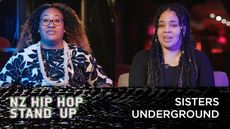
NZ HIP HOP STAND UP - SISTERS UNDERGROUND "IN THE NEIGHBOURHOOD"
Two teenagers from Ōtara, Brenda and Hassanah, were the voices behind the 1994 song, In the Neighbourhood. Released under the name ‘Sisters Underground’ their song made the NZ Top 10 on release, hit the charts in Australia, and went on to become an iconic part of New Zealand music history. Brenda and Hassanah share their thoughts and memories of In the Neighbourhood. Exploring themes of Pasifika representation, family grief, and what it was like to be two teens rolling in the Ōtara neighbourhood. The song’s success came as something of a surprise to the duo who, years later, are still coming to terms with the resounding impact ‘In the Neighbourhood’ had on Aotearoa. {{18946}} “When that came out, it was a very proud moment,” Upper Hutt Posse member Teremoana Rapley says. “It felt like I wasn’t alone, because up to that point, there were no sisters to the left or to the right of me.” Sarah Tamaira AKA Voodoo Child shared a similar experience: “You know, when you’re a young girl those kinds of things mean everything to you, seeing brown faces on the TV.” The song carries with it a strong sense of identity. It was funded by a Manukau City Council grant, and the music video was filmed in various locations throughout Ōtara, including their own homes, friends and families. Thinking upon her lyrics, Hassanah explains: “I was really trying to connect the hip hop that I admired to what we would do every day. I wanted it to reflect social inequalities… the true enemy in my mind at that time was, you know, the system.” {{18947}} This mix of hip hop and the everyday might be why the song has meant so much to so many people for so long. When Sisters Underground performed the song to close the 2013 Sliver Scroll Awards, they were shocked at their reception. People were dancing, singing all the lyrics, even crying. A testament, perhaps, to the importance of representation, highlighting as Hassanah says, “what it meant for them to see just regular kids from the kinds of neighbourhoods they came from on TV.” . {{18949}} About the Artists Brenda and Hassanah went to school and lived in the same neighbourhood of Ōtara and became friends when they were thirteen years old. Read more about Sisters Underground on Audioculture Initially the two performed in halls in South Auckland and then were linked up with producer Alan Jansson who worked with them to record ‘In the Neighbourhood’, which was released in 1994 alongside a music video that focussed on their upbringing in the suburb of Ōtara. The song charted in New Zealand for 12 weeks and went on to become a hit in Australia. It even made the European charts including the Top 10 of the Italian dance chart. In 1995 they were named ‘The Most Promising Group’ at the New Zealand Music Awards.
